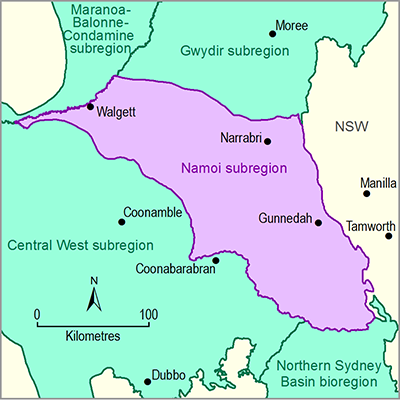- Home
- Assessments
- Bioregional Assessment Program
- Namoi subregion
- 1.1 Context statement for the Namoi subregion
- 1.1.7 Ecology
- 1.1.7.1 Namoi river basin setting
Table 13 Management units of the Namoi river basin
*Characterised by high quality water resources
Source data: Namoi CMA (2009)
Major primary industries in the Namoi river basin include cotton, livestock production, grain and hay, poultry horticulture and forestry. The economic output from these industries is over $1 billion with dry land and irrigated agriculture contributing over half of this (Green et al., 2011). The major land use in the river basin is sheep and cattle grazing (over 61% of the river basin). Wheat, cotton and other broad acre crops are grown on the alluvial floodplains; there is over 800 km2 of irrigation for cotton and in excess of 300 km2 irrigated pasture and fodder crops. Extensive areas of native woodland (mostly Pilliga scrub) and forests occur in the middle of the Namoi river basin to the south of Narrabri and account for approximately 18% of the river basin. Major land use statistics are shown in Table 14.
Table 14 Land use statistics for the Namoi river basin
Source data: Green et al. (2011)

